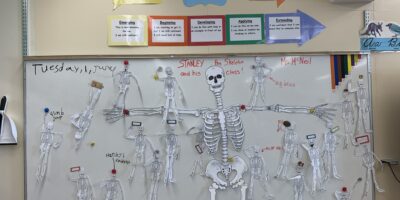On Friday, November 27th, I had the opportunity to join SD91 in their professional development day. I signed up for the Brain 1st workshop, which was designed to present the Brain 1st program. This program teaches about neurological patters in the brain of students and how they work in today’s age and classrooms. We were also taught about impacts on the brain which can lead to the readiness of learning, as well as strategies to then improve classroom behaviours, emotions and learning traits.
In this session I learned about the different parts of the brain and the components of it that play a part in learning. Starting off with a quick discussion, that ended up reappearing throughout the entire session, was how giving birth naturally is one of the first stimulus’s that help a people learn. Going through the birth canal stimulated the brain by the different pressures and body movements the baby must face in order to enter the world. Throughout this session, we the participants, were also instructed to do small movements with our bodies to show the mind-muscle connection. These were interesting because as someone who like to think of herself as pretty active, going to the gym, hiking, walking my dog etc. these movements were more difficult than I thought for how simple they really seemed to be. It was described that the more time we spend in front of a screen, and not using certain muscles in our body and brain, it can make simple mind-body connections more difficult. So even though I think that I am spending quality time outside or being active for my health, the amount of time I spend on my computer for school, or my phone for fun, it is all lowering the health benefits of me being more active.
From these points we learned about neurons, the limbic system, and the cerebellum which then lead into the discussion on mindfulness. I enjoyed this mindfulness conversation because it emphasized different activities to help deal with stressors in life. By just taking a few moments to sit and breath, it helped reduce anything that was over stimulating the body as well as reconnect to what was happening around the individual. The Mindfulness-Based Stress Reduction (MBSR) program should be implemented (or at least a version of it) into the curriculum so that students who are in stressful situations whether they recognize it or not, can learn how to cope with those feelings. It needs to be taught that these emotions are not wrong, and everyone goes through them, but that there are ways to help cope and manage stress in school environments.
This learning influenced my thinking on K-12 teaching and learning because as a student myself who is becoming a teacher, I can recognize the stresses in both learning and teaching at this point in my life. From being a student the stress to then make sure every assignment is completed and done proficiently for all my classes is a stress. To the then going and observing knowing that I will have to teach students how to deal with these emotions as well is another. But knowing how to deal with it myself can then make it so I can teach students how to deal with it. This would have been super beneficial for me to have learned particularly in high school because that is when I started to recognize that I was stress, but if I had learnt it in elementary by the time I reached that point I would have been able to manage it. Learning how the implement Mindfulness programs like Brain 1st into a classroom would be very beneficial for any one participating and learning from it, students and teachers alike.



Leave a Reply